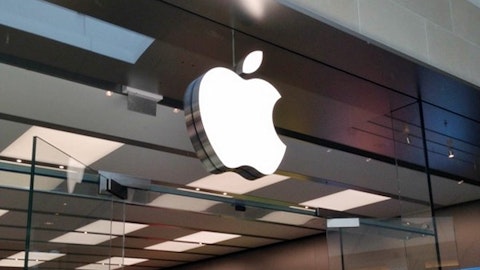In its latest letter to investors, David Einhorn‘s Greenlight Capital said that its funds lost 3.8% in the fourth quarter of 2015 – net of fees and expenses. In general, 2015, was a terrible year for Greenlight performance-wise and the firm lost 20.2%, while the S&P 500 inched down by 2.15%. Nevertheless, over the long-run, Greenlight has returned 16.5% per year on average since its inception in May 1996. In this article, we will take a closer look at some of the stocks that Greenlight highlighted in its fourth-quarter letter and see how they affected the fund’s performance during the fourth quarter, as well as assess the investor’s opinion regarding the future performance.
As stated in the letter, the fund lost money in every quarter of the last year, mainly affected by the strong performance of its short bets on Netflix, Inc. (NASDAQ:NFLX) and Amazon.com, Inc. (NASDAQ:AMZN) and the declines registered by CONSOL Energy Inc. (NYSE:CNX) and Micron Technology, Inc. (NASDAQ:MU). Among other reasons behind the decline was that Greenlight did not hold shares of any of the 50 best-performing companies in the S&P 500, had short positions in four acquired companies and it failed to take advantage of its profits in Micron Technology and Sunedison at the right time.
“When we add up all of the losing positions in the portfolio, the percentage detraction to out total return for 2015 was only moderately worse than a normal year. In contrast, all of our profitable positions in 2015 added up to only 19%. Our 20-year average contribution from winners is 51% and the previous worst year was 31%,” Greenlight said.
Let’s start with Greenlight’s worst performing investments, which were also among its biggest positions: CONSOL Energy Inc. (NYSE:CNX), Micron Technology, Inc. (NASDAQ:MU) and Sunedison Inc (NYSE:SUNE).
“Nothing distinguishes these from our other large losers in prior years. What’s unusual is that they all happened at around the same time. Having three in a single year is both unfortunate and too many for us to be able to succeed,” Greenlight said.
The investor considers that the last seven months of 2015 represented a “difficult environment for value stocks”. However, they remain confident in value investing and continue to believe that this approach is more successful over time in comparison with strategies that “ignore value”.
“On balance, we benefit from tailwinds more often than not. However, there have been and will be periods where that isn’t the case. We know that in each prior period when the environment was challenging for our style, things eventually turned and we did well. We don’t know when the winds will change, but we know that they will.”
Micron Technology, Inc. (NASDAQ:MU), which was the firm’s biggest winner in 2014, was the largest loser in 2015. After a more detailed analysis, Greenlight decided to close out its stake in the company. As of the end of the third quarter, Greenlight held roughly 12.37 million shares of the company, worth more than $185 million. Micron Technology, Inc. (NASDAQ:MU)’s stock ended 2015 with losses of more than 59%. Nevertheless, Greenlight managed to earn an internal rate of return of 14%.
Follow Micron Technology Inc (NASDAQ:MU)
Follow Micron Technology Inc (NASDAQ:MU)
Receive real-time insider trading and news alerts
Micron Technology, Inc. (NASDAQ:MU) has been one of Greenlight’s biggest positions for a long time and the fund mentioned it in almost each investor letter. The fund’s thesis took a hit in the third quarter and the fund reduced its stake, consequently saying in the investor letter for the quarter:
“Two other problems with our thesis have emerged. First, the Chinese have expressed interest in getting into DRAM. Our prior view was that the consolidated industry would not face new entrants. While the Chinese threat is distant, we judge it relevant. Second, MU announced a much more aggressive capital spending plan for NAND than we envisioned. While management believes that the extra investment will generate adequate returns, we are unconvinced. With separate problems clouding both the short-term and long-term, we determined that there is enough risk to the thesis to reduce the position.”
On the next page, we are going to discuss two of Greenlight’s new positions, Macy’s, Inc. (NYSE:M) and Mylan NV (NASDAQ:MYL).
During the fourth quarter, Greenlight established a position in Macy’s, Inc. (NYSE:M), at an average price of $45.69 per share, betting on the eventual spin-off of the company’s real estate into a REIT, which could unlock plenty of value. However, the management decided this move would not be good for the company’s operational flexibility. Between October and December, the stock fell to below $35. Around those valuations, “the math might make more sense,” the letter added.
Follow Macy's Inc. (NYSE:M)
Follow Macy's Inc. (NYSE:M)
Receive real-time insider trading and news alerts
“While it’s unlikely that management will reverse course on its own, it wouldn’t surprise us if a private equity firm teamed up with a REIT to buy the company and unlock the value privately. Even if this doesn’t happen, the shares are cheap at 5x EBITDA, 7x equity free cash flow, and less than 9x 2015 EPS, with a healthy balance sheet and strong history of share repurchases. We think a portion of the recent sales weakness was driven by unseasonably warm weather and a strong dollar impacting tourist business, which should set up for favorable comparisons in 2016,” Greenlight said.
Another company added to the Greenlight’s portfolio is Mylan NV (NASDAQ:MYL), a large-cap generic pharmaceutical company, whose stock tumbled by 29% in the first nine months of 2015 and by more than 45% from their mid-year highs, after Teva Pharmaceutical Industries Ltd (ADR) (NYSE:TEVA) dropped its hostile takeover bid for Mylan.
Follow Mylan Inc. (Old Filings) (NASDAQ:MYL)
Follow Mylan Inc. (Old Filings) (NASDAQ:MYL)
Receive real-time insider trading and news alerts
“During the fall, the market became overly focused on a series of overhangs including potential earnings dilution from a proposed and ultimately failed buyout of Perrigo (a private-label OTC business); corporate governance concerns, including an unusual takeover-defense mechanism; and widespread unease about the pharmaceutical sector amidst scrutiny of specialty pharmaceutical manufacturers like Valeant. We acknowledge eventual headwinds for the company’s branded EpiPen product, which could encounter competition from generics in late 2016. However, we see medium-term upside from a competitor recall, an announced share repurchase, and board review of corporate governance complaints. Ultimately, we expect MYL to earn close to $7 per share in 2018, driven by a robust pipeline of respiratory, injectable and biologic drugs and by further capital deployment including share repurchases. We initiated our position at an average price of $45.32, about 9x 2016 consensus EPS estimates. MYL shares ended the quarter at $54.07.”
Disclosure: Javier Hasse holds no positions in any of the securities mentioned above.





